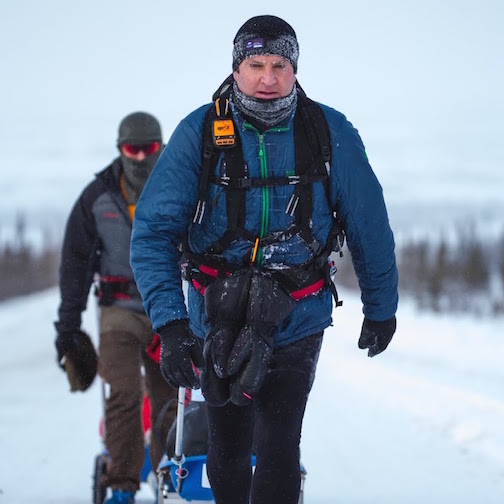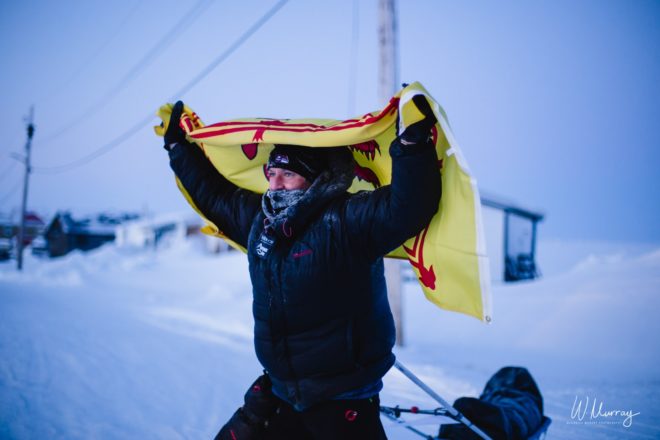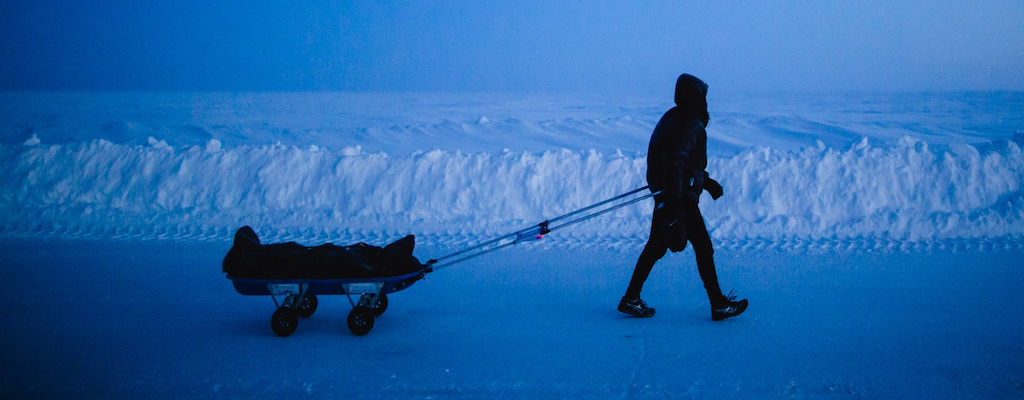Race on the Top of the World
 Following his historic second-place finish at the 2017 6633 Ultra Marathon, extreme athlete Roddy Riddle says he’s retiring.
Following his historic second-place finish at the 2017 6633 Ultra Marathon, extreme athlete Roddy Riddle says he’s retiring.
“It was always going to be my last race. That’s why I had to go back and finish unfinished business this year— I’m retiring at the top.”
Beyond Type 1 caught up with Roddy as he was beginning his recovery from “the toughest thing I’ve ever done in my life. It’s probably the toughest thing that’s out there in the world. It’s just a brutal event.”
And that’s saying something: Roddy’s career has spanned international cycling, the Marathon de Sables across the Sahara Desert and, of course, the grueling 350-mile Arctic Circle race. He didn’t stop taking on these challenges after receiving a type 1 diagnosis at the age of 40. Instead, Roddy lives by the motto he passes along during his many worldwide sports competitions and speaking engagements, “Rule type 1 diabetes. Don’t let it rule you.”
Beginning in Eagle Plains, Yukon Territory, the 6633 Ultra is an extreme marathon that takes the world’s hardiest competitors through ice and snow for days, until a select few reach the finish line in Tuktoyaktuk (Tuk), Northwest Territories, Canada.
The 6633 Ultra is revered among endurance athletes for its difficulty, and Roddy’s observations about this year’s race pool spoke to that. “There were some that were there for the second time that still didn’t complete it,” he says, “Out of the 24 that started it, there were only seven finishers.”
Roddy’s still feeling the effects of the race. Although they’re completely different, the symptoms sound similar to complications of diabetes. “I can’t feel any of my toes yet. Many of the competitors that take part get nerve damage [in their extremities]. You complete 14 marathons in minus 40 degrees (Celsius, which is also minus 40 degrees Fahrenheit) so it’ll take a while to get the feeling back in my toes.”
About that “unfinished business”: this wasn’t Roddy’s first attempt at the 6633, but this year was the first time he completed the race, a remarkable feat in itself. After losing time due to severe hallucinations and injuring his back, Roddy had to pull out of the 2016 race on the final day. What was different about preparing for his comeback?
“Training-wise, I was more prepared, but I also was on the start line with quite a lot more respect for the race. And last year, I had a two-wheeled pulk, which is the sledge that you tow, and this year I had a four-wheeled pulk. I had a complete upper-body harness, so this year I had no back issues at all during the whole race.”

Roddy stocked his pulk with necessities like food, including porridge, whey powder, energy drinks, cereal bars, energy bars and other supplies like his sleeping bag and bevy bag. Since the checkpoints are anywhere from 20 to 70 miles apart, opportunities to sleep were few and far between.
“I stopped for about two hours and that was at the top of Wright’s Pass, which is a big mountain. That’s the only time I stopped actually, on the side of the road. The second-to-last leg is a 70-mile leg, and I did that whole leg without actually stopping. When the Northern Lights come out, that sort of puts a smile on your face, and keeps you going.”
And yet, as many in the diabetes community already know, not only did Roddy manage to complete such an intense course in an impressive time, but he did it all while managing his type 1 and the specific challenges that come along with it.
“Before the race started, my continuous glucose monitor (CGM) receiver decided to pack in,” Roddy says, “So, because I had the Dexcom G5, I downloaded the app that you can get for your phone.
“Four days into the race, my phone decided it didn’t like the cold, so it packed in as well. I had to go old-school and do blood glucose tests. To do that meant I had to take three pairs of gloves off, trying to get blood out of my fingers in the cold temperatures, which is not ideal. Then there was the meter saying that the strips were too cold. I had to put them down my front to warm them up during the race so I could do blood glucose tests on the move.
“About every day my insulin froze solid. When I needed to refill my insulin pump, I had to put it in warm water to defrost it. I’ve since found out that you’re not supposed to use insulin that’s been frozen, but as it turned out, my blood glucose levels were okay during the race, so the frozen insulin didn’t actually affect my blood glucose levels.”
Wearing an insulin pump in these freezing temperatures was a whole other challenge for the athlete, who managed to avoid hypoglycemia for the entire duration of the race.
“I had a Lycra belt made to carry my insulin pump, so that was next to my skin and around my stomach at all times, so the insulin pump was never exposed to the cold. I had 5 layers over the insulin pump. During the whole event, I didn’t actually have to bolus insulin at all, because the exercise was doing the job. So I just had my basal insulin trickling away. That’s the only insulin I had during the whole thing, so I was down to about 10 daily units of insulin. And I never had the tube exposed at all because I was never doing any bolusing. The only time the pump came out was to change the insulin after four days.”
After sitting down and eating a warm bowl of porridge, Roddy celebrated crossing the finish line by doing what most people do upon completing a 350-mile race: he gave a presentation about it.
“I finished at 8:30 in the morning—8:28 a.m. actually, to be precise. There’s a school hall in Tuk near the finish, and they’d been following my progress throughout the race. The janitor from the school is from Scotland as well. He was at the finish line, playing Scottish music through the stereo in his car, so that’s where the Scottish flag came from that I crossed the finish line with.”

“So we get to the school and the head teacher said to me, ‘Would you be able to do a talk?’ and I said, ‘Yeah, no problem.’ She said, ‘The P4-5s [second and third grades] are doing nutrition, and it just so happens to be on diabetes today.’
“Three hours after crossing the finish line, I was doing a talk in a primary school for the P4-5s on diabetes!”
The lasting message Roddy left with the kids at the school echoes an important life lesson for people with and without type 1. “You can’t always do things first time. Sometimes you have to sort of go back and reassess things.
It proves that I’m not indestructible. I do get things wrong, and it’s good for kids to realize that as well: you can’t always get things right the first time. Sometimes it takes a second or third bite at the cherry to get things done.”
Read more about Roddy Riddle’s incredible feats in The Toughest Footrace on Earth.





